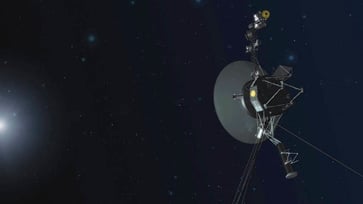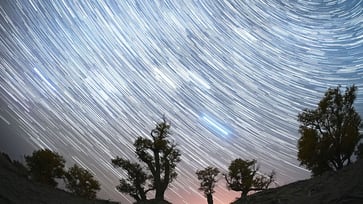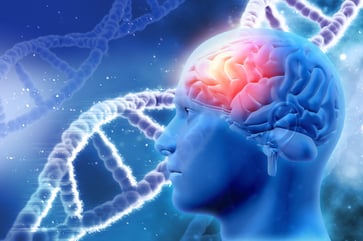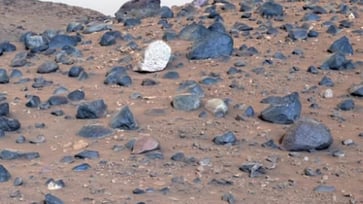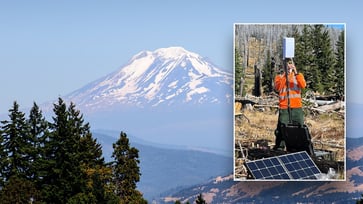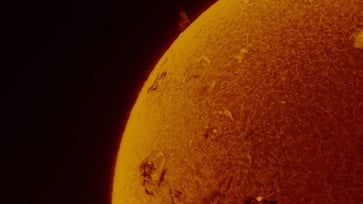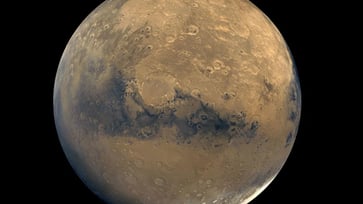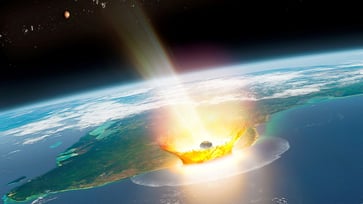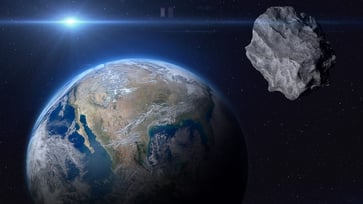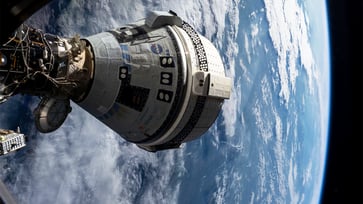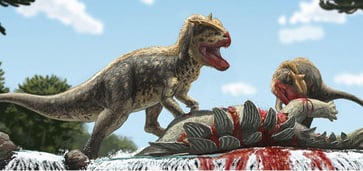A colossal cavern on the moon has been discovered by researchers, which may serve as a potential shelter for astronauts.
The cave, which is at least 130 feet wide, is situated near the location of Apollo 11's landing.

A team of Italian scientists has confirmed the existence of a large cave on the moon, close to where Neil Armstrong and Buzz Aldrin landed 55 years ago.
The Sea of Tranquility cave, located 250 miles from Apollo 11's landing site, could house future astronauts as several nations aim to establish a permanent human base on the lunar surface. Apollo 17 was the final flight of the Apollo program in 1972.
A lava tube collapse created the pit, which is one of more than 200 discovered in that area, according to scientists.

NASA's Lunar Reconnaissance Orbiter captured radar images of the Mare Tranquillitatis pit in 2010 and compared the results with lava tubes on Earth.
The study suggests that a portion of the radar reflections detected from the MTP can be linked to a subsurface cave conduit that is tens of meters long, indicating that the MTP may lead to an accessible cave conduit beneath the Moon's surface.
"The MTP's potential as a lunar base is promising due to its ability to provide shelter from the moon's harsh environment and support long-term human exploration."
According to NASA, the radar data shows that the underground cavity is at least 130 feet wide and tens of yards long, and is accessible from MTP, the deepest known pit on the moon which is about 330 feet deep.
The existence of a lunar cave has finally been proven after 50 years of mystery, as announced by Leonardo Carrer and Lorenzo Bruzzone of the University of Trento in an email to the Associated Press.
Scientists believe that most of the pits on the moon are located in its ancient lava plains, with some possibly existing at the South Pole, where NASA plans to land astronauts later this decade. Permanently shadowed craters at the South Pole are thought to contain frozen water that could be used for drinking and rocket fuel.
In 1969, on July 20th, the first two astronauts to land on the moon were Armstrong and Aldrin, as part of NASA's Apollo program.

Hundreds of pits and thousands of lava tubes on the moon could provide natural shelters for astronauts, shielding them from cosmic rays, solar radiation, and micrometeorite impacts.
Constructing habitats from scratch would be more difficult and time-consuming, especially if the walls need to be reinforced to prevent collapse, the team stated.
According to Mahesh Anand, a professor of planetary science and exploration at The Open University, a lunar habitat within a cave would offer a less hostile environment for astronauts compared to the conditions they would encounter on the lunar surface.
He stated that there would be less fluctuation in ambient temperature between lunar day and night, as well as more protection from space radiation and micrometeorite impacts.
"Accessing a 100-meter (330-foot) deep chute would be challenging and would necessitate innovative engineering solutions for creating a sustainable habitat."

By 2025, the U.S. aims to return a crew to the lunar surface as part of a renewed dedication to crewed missions, with the help of private companies such as SpaceX and Blue Origin. They plan to land at the South Pole, where permanently shadowed craters are thought to contain frozen water.
In February, the U.S. saw Intuitive Machines' Odysseus lunar lander land near Malapert A in the South Pole region of the moon, marking the first American spacecraft to touch down on the moon since the last crewed Apollo mission over 50 years ago.
science
You might also like
- Lunar modules from the first two moon landings have been captured in stunning detail by Orbiter photos, more than 50 years after the historic missions.
- Discovery of a remarkable mastodon jaw in a New York homeowner's backyard
- NASA resumes communication with Interstellar Voyager 1 after pause.
- In 2055, the asteroid that was once referred to as Earth's "mini moon" will make a return visit.
- A new species of sea slug that resides in the ocean's 'midnight zone' has been discovered with a glowing appearance.
